Aquarium filtration is essential for creating a thriving aquatic habitat. So if your filter stops working it is important to fix this crucial part of your aquarium immediately. This insightful article is all about filter maintenance, from identifying common signs of filter malfunction to troubleshooting and fixing issues, this guide equips you with the knowledge and tools needed to ensure the well-being of your underwater ecosystem.

When a fish tank filter isn’t working properly, the safety of the entire system gets compromised.
In such cases, faulty equipment can affect everything from aeration and pollution in the tank down to water chemistry.
Therefore, to sustain a healthy environment for your fish, you should be able to tell when your aquarium filter has stopped working.
How to tell if your aquarium filter is not working?
If you’re new to the hobby or haven’t experienced any problems with your filter so far, you may not know how to tell when there’s something wrong with it. This lack of understanding could potentially destroy your entire tank if the problem does not get resolved in time.
Fortunately, spotting such malfunctions isn’t that difficult, given you understand how a standard water filter works.
Aquarium filters are used to remove detritus, chemicals, and other toxic particles from the water, while also serving as a bed for beneficial bacteria. To achieve these effects, most filters use a motor-powered impeller which sucks the water through an intake hose.
The water is then pushed through filter media and pumped back into the aquarium.
Let’s take a look at what they are.
Here’s how to tell if your fish tank filter isn’t working:
- Check to see if the motor is working
To check if the motor is running, listen for a buzzing sound coming from the filter. If your filter works properly, then it should emit a gentle hum when it’s turned on.Conversely, the lack of any noise might mean the motor is broken.
In such cases, you should check if there are any unplugged cables.
This might sound silly, but I can’t count the times when one of my other pets messed up my wiring and made me pull my hair out.
Another thing you should keep in mind is that you could still be dealing with a faulty filter even if you can hear the motor running.
A well-functioning hang-on-back filter will not only emit audible sounds but also move the water surface in the aquarium.
If the water in your tank is still, then you’re most probably dealing with a clog.
- Listen for any unusual sounds
After checking the motor, you should proceed to see if the filter is making any unusually loud noises.Listen for any rattling or grinding that may come out of it.
Grinding is most often, caused by small particles like sand, gravel, algae, or plant matter that gunk up the impeller with time.
Due to the resistance from the build-up, the impeller spins harder and the particles grind against the internal chamber of the filter.
Rattling, on the other hand, is a result of the impeller shaking back and forth more than it’s spinning.
In case you have noticed any of these odd sounds, then there’s a high chance your filter is clogged.
- Check if your filter is running slow
Examine the intake hose of your filter to see if it’s sucking in water.Damaged filter systems have a reduced suction force or no suction at all.
This means that they will pull water at a decreased rate or in some circumstances no water at all.
Another way to spot if your filter has reduced suction is to see whether it’s pumping out water. If it’s working as it’s supposed to, then you should clearly see water flowing from its top or its outlet pipe if you’re using a canister filter.
Not pumping water is most often due to an obstruction in the filter’s impeller or a broken motor.
- Measure the amounts of waste
One of the main functions of a filter is to perform biological filtration which gets rid of any harmful toxins in the aquarium.For this purpose, filtration systems have a substrate that serves as a bed for beneficial bacteria. When the aquarium water gets sucked in, it gets through these bacteria-rich areas in the media where toxic compounds such as ammonia and nitrite get processed.
Consequently, when a filter doesn’t work as it’s intended, there’s a spike in the number of toxic substances. Use a liquid test kit to measure the amounts of waste in your aquarium, if you suspect there might be a problem with your filter. Here’s a guide on reducing high ammonia levels since that’s one of the most common issues that may arise alongside a broken filter.
Why has your water filter stopped working?
Your filter may have stopped working for a variety of reasons.
In the following lines, I’ll also present you with solutions on how to fix the issues.
So, take a look at the most common reasons why an aquarium filter might not be working:
1. There’s a clog of dirt and debris stopping the impeller from spinning
This is probably the most prevalent cause of filter malfunctions I’ve come across and usually the one that’s the easiest to take care of.
As time goes on, your filter starts to accumulate dirt from the debris it filters out. Naturally, if it doesn’t get cleaned on a regular basis, the filter gets clogged at some point, especially if you’re keeping messy pets such as turtles.
When this happens, the natural flow of the water gets interrupted which subsequently increases the toxicity in the aquarium.
Dirt and debris blockages may occur anywhere inside the filter but typically affect the impeller the most. If any of the passages get completely obstructed, then the filter stops pumping water altogether.
The solution to this issue is quite simple.
All you need is a bucket, a siphon, and a screwdriver.
- To remove the blockages from your filter, simply fill the first bucket with some of the aquarium water.
- Proceed by unplugging the filter, emptying it from water, and taking it apart.
- Next, take the filter’s media or sponge out and rinse it in the aquarium water.
- After you’ve done cleaning the filter, put all of the parts back together and plug it back in.
Author’s note: Do not clean the filter media or sponge with tap water! The chlorine in tap water destroys the beneficial bacteria residing in the filter media and disrupts the nitrogen cycle. The nitrogen cycle is a chain of biochemical reactions which reduces the toxicity in an aquarium by converting ammonium / ammonia into nitrite and subsequently nitrate.
2. The impeller or motor is broken
If scrubbing your filter clean didn’t fix the issue, then the motor or impeller might be damaged or even broken.
The motor in a filter is responsible for generating power and transmitting it to the impeller, which is basically a spinning fan.
The impeller then sucks in the water from the aquarium, passes it through the filter media, and pumps it back into the aquarium again.

If the main issue you’re dealing with is a lack of suction, it might very well be due to a broken motor or impeller.
In case one of these parts is malfunctioning, you should try to replace or fix them as soon as you can.
Without a proper filtration system, all of your hard efforts could easily go to waste.
If you’re using a hang-on-back filter, there are some easy steps you can follow, should you choose to fix the problem yourself.
- Start by unplugging the filter and emptying the water from it.
- Continue by slowly unscrewing the motor from the container.
- After the motor has been unscrewed, lift the impeller up, clean it and plug the motor to see if it starts spinning. In case it doesn’t, then the motor is either burnt out or its connection with the impeller is wasted.
In the former case, you’d be better off buying a new filter altogether. Alternatively, if the problem lies with the impeller, you can replace it with another one.
Some filter manufacturers provide you with a spare impeller when you purchase their product.
Don’t fret if yours didn’t include one.
You can simply check the model of your filter and order it online.
3. The filter is not primed

This one is easy to overlook.
I’ve come across multiple cases of filters that stopped working after being cleaned and in almost every one of them, the owner had forgotten to prime it.
In its essence, priming means removing the air from a filter by placing water inside it.
Regardless of the existence of self-priming or even no-priming filters, most filtration systems on the market require manual priming.
Priming a filter is of vital importance for its proper functioning.
An unprimed filtration system runs with air in its tubing as opposed to water which increases the risk of a burned-out motor and consequently reduces its life.
To prime your filter, simply fill the filter cartridge with some aquarium water and then start the motor.
In case you’re one of the lucky ones who’s in the possession of a self-priming or no-priming filter, then all you need to do is press the primer button once or a few times.
4. There are damaged wires

If troubleshooting all of the other probable causes hasn’t resolved your issue, you should proceed to check if there are any chewed, torn, or damaged wires or pins.
Sadly, this one isn’t as easy to solve as all of the aforementioned issues unless you’re tech-savvy.
Even then, I still wouldn’t recommend tinkering with any cables, or wires.
The best course of action in such cases is to simply replace the filter with a new one.
However, it’s also worth noting that sometimes the problem may reside in your electric outlet.
If your filter system stopped working after a power outage, then the outlet may have died due to a power surge.
Plug your filter into another socket to check if the problem gets resolved.
How long can your fish survive without a filter?
Unlike nature, aquariums are closed-off systems that aren’t large enough to sustain an ecological balance.
That’s why we as aquarists use a number of tools to aid us in our efforts to maintain the state of equilibrium in our tanks.
And one of the most important of these is the filter.
While some may point out that it’s technically possible for fish to survive in a filter-less environment, this would require a lot more time and dedication to maintain.
The time a fish can survive without a working filter is generally 3 to 7 days. The timeframe itself depends on several factors such as the species of your fish, their bio-load, and the number of plants in your aquarium. Optimizing each of them ensures your fish have the highest chances of survival in the case of a power outage or another type of emergency.
How exactly do these factors all fit together?

Well, aquarium plants increase the amount of oxygen and stabilize water parameters by absorbing some of the toxic compounds in your tank.
Bio-load, on the other hand, determines the amount of waste your fish produce.
So if your aquarium is planted, then some of the toxicity will be canceled out by the plants.
However, your plants will have less of an effect, if the bio-load in your tank is high.
Author’s note: Beneficial bacteria in your filter start to die off after 30 minutes if they haven’t been supplied with oxygen. That’s because in the filter’s media bacteria depend on the water flow, which supplies them with oxygen from the tank. To counteract this, measure your water parameters and add bottled bacteria to your aquarium if needed.
Lastly, some types of fish may survive a decrease in oxygen levels for longer periods. Labyrinth fish, such as Bettas, have evolved in environments with high air temperatures and a significant deficit of oxygen.
This has led them to develop a lung-like organ that lets them breathe straight from the air.
So all of these circumstances interact with each other and result in an aquarium fish potentially dying in three to seven days if it’s left without a filter.
It may also be a good idea to skip feeding the day your filter dies to decrease the burden on the beneficial bacteria inside the main tank. Fish can go without eating for up to two weeks, so fasting them for a day or two is okay.
Especially if it increases their chances of survival.
Final Words
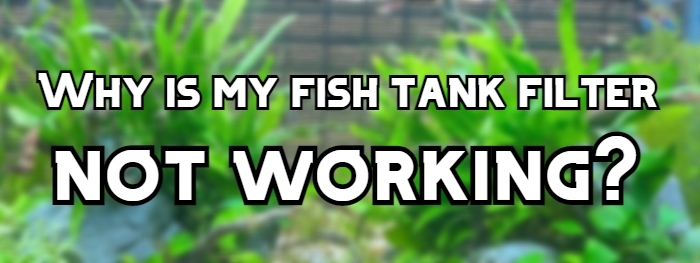
Troubleshooting technical problems can be annoying.
I hope this guide helped you fix your issue and that your aquarium filter is working like brand new.
Stay tuned for more guides from the fish keeping world.


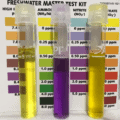





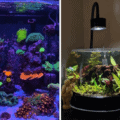
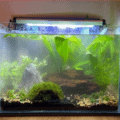

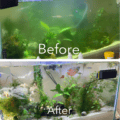
1 thought on “Why is your fish tank filter not working? (Troubleshooting tips)”